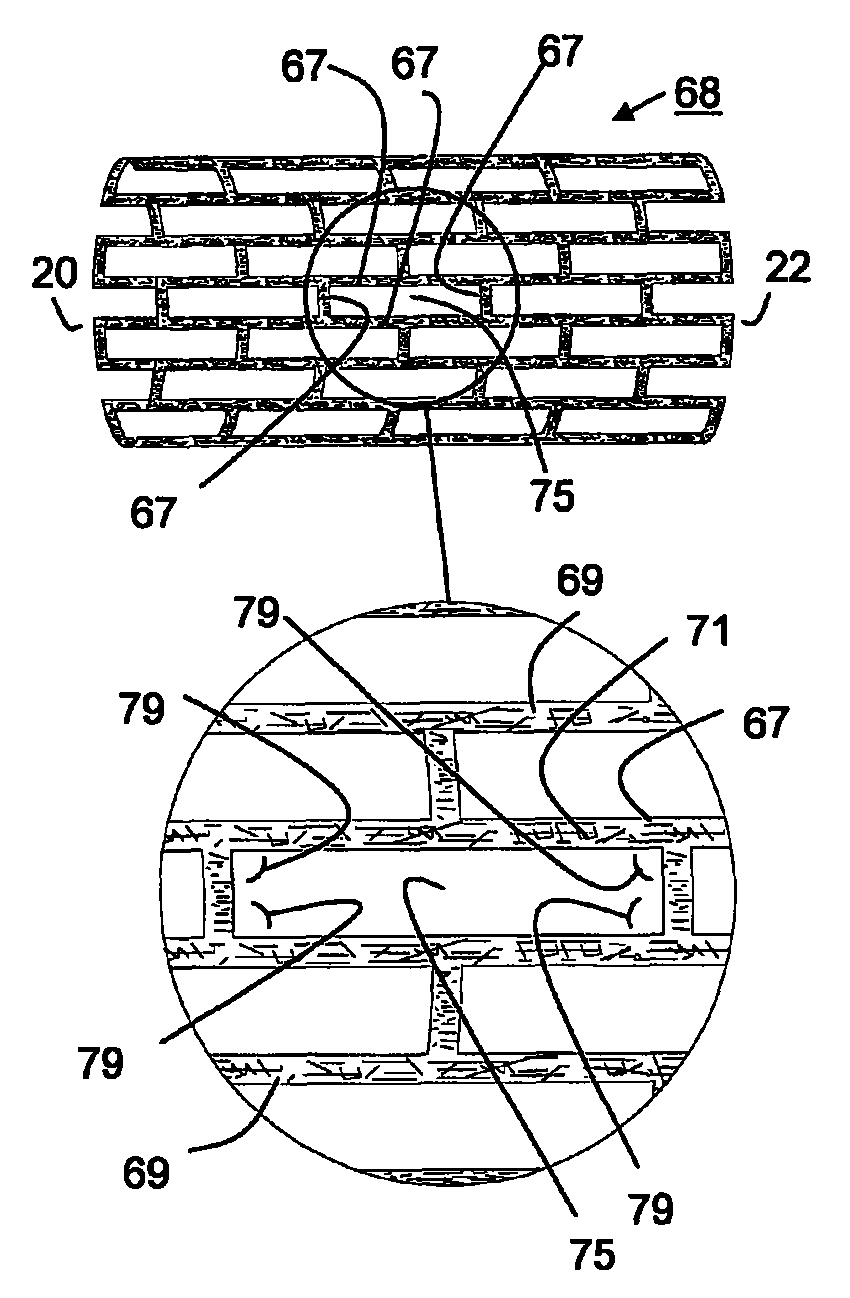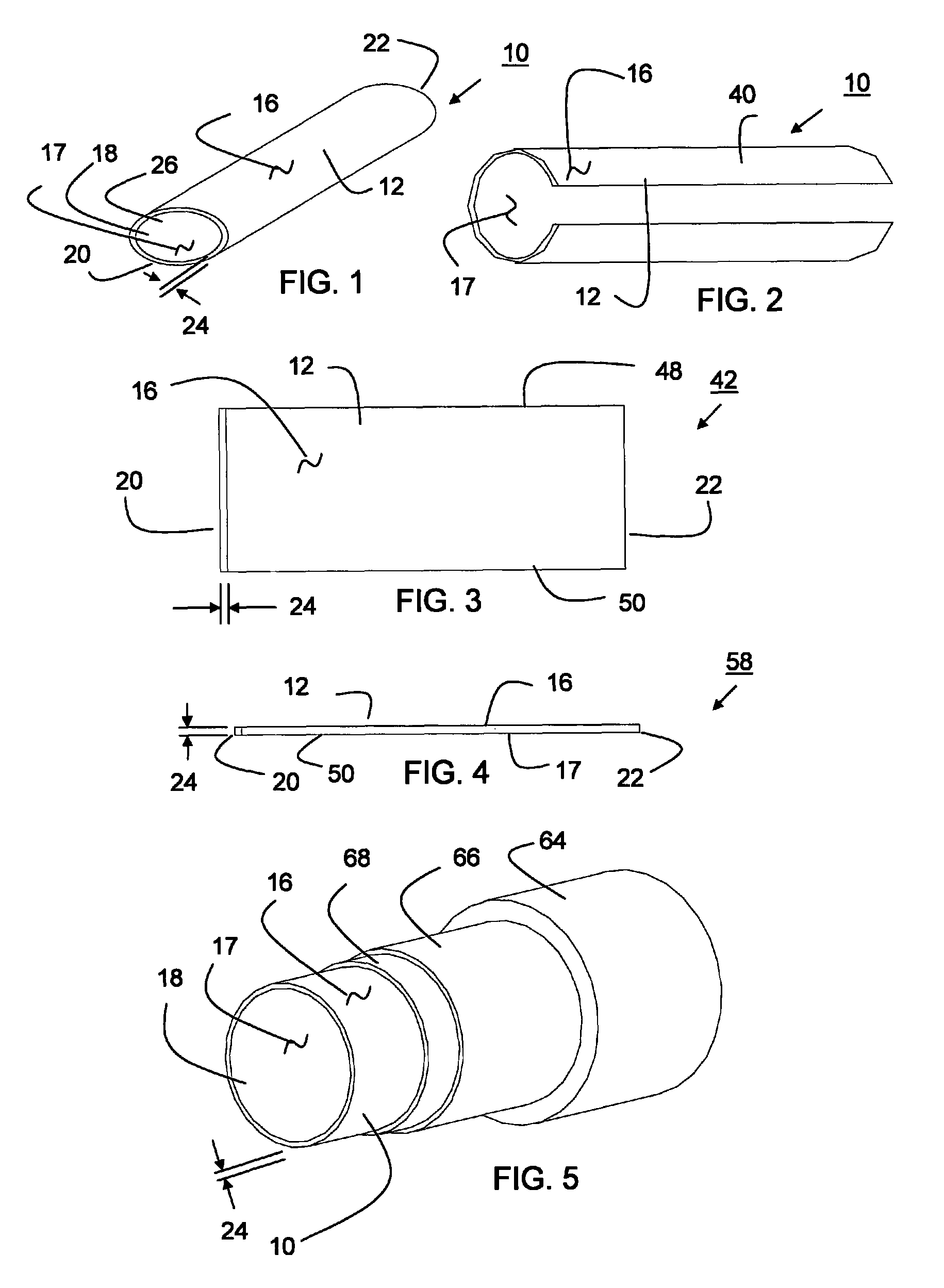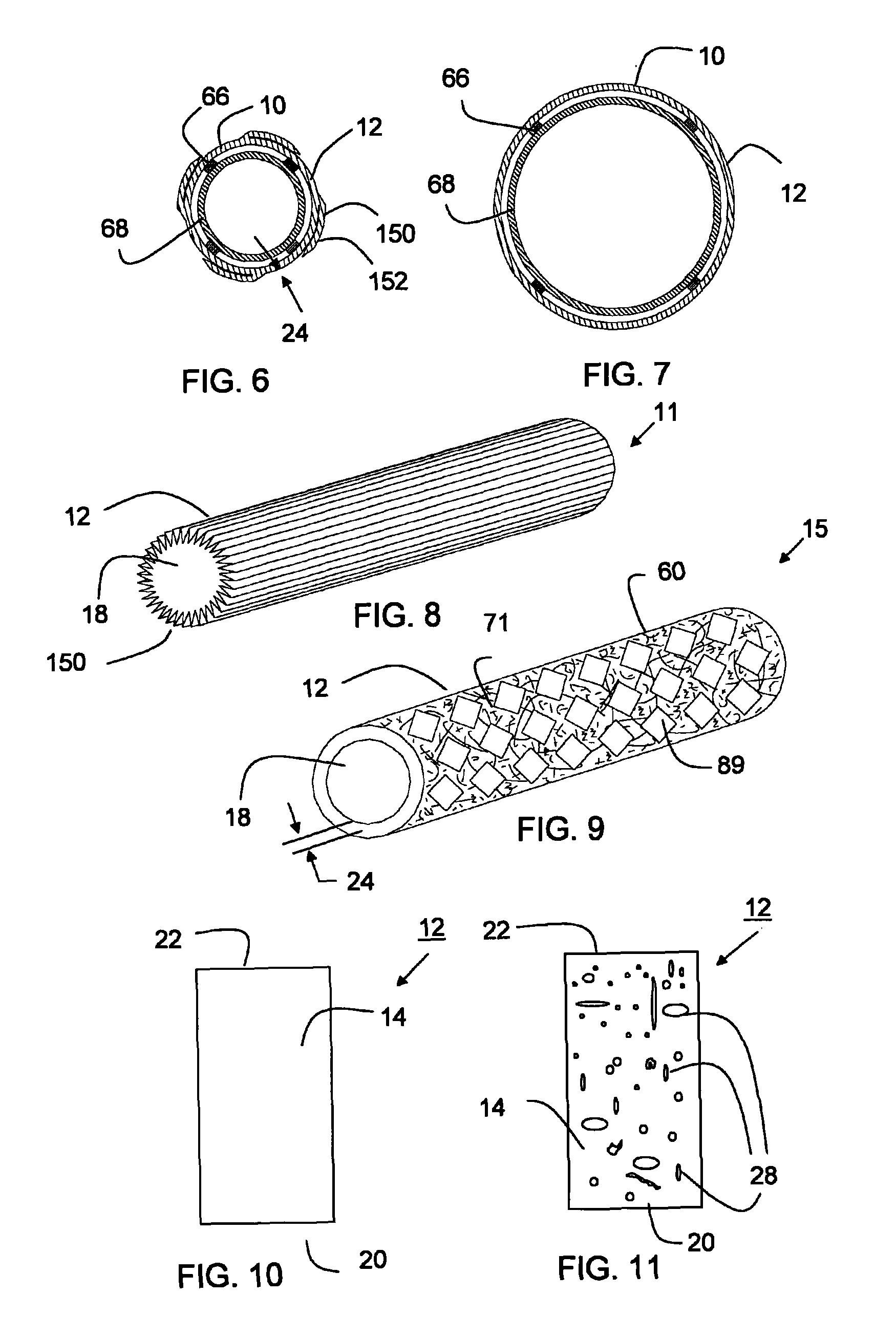Fibrillated biodegradable prosthesis
a biodegradable, biodegradable technology, applied in the direction of prosthesis, blood vessels, manufacturing tools, etc., can solve the problems of increasing the possibility of the living body rejecting foreign grafts, heavy wall thickness, and inferior physical properties of expanded polytetrafluoroethylene materials, so as to reduce stress concentration, improve flexibility, and reduce the effect of manufacturing process complexity
- Summary
- Abstract
- Description
- Claims
- Application Information
AI Technical Summary
Benefits of technology
Problems solved by technology
Method used
Image
Examples
example 1
Expanded Material Used As Vascular Grafts
[0305]A thin wall, cylindrical shaped expanded tubular profile having a diameter of approximately 6 mm and a wall thickness of approximately 0.10 mm made of two layers of expanded material comprising polytetrafluoroethylene (PTFE) material having a structure including fibrils and voids that includes a plurality of glass nano fibers and nano size silicon dioxide crystals is converted into a prosthesis for a medical application. The fibrils of the expanded material have a mean length in the range of about 15-25 microns. The prosthesis is used as a coronary artery bypass graft (CABG) in a medical procedure. The prosthesis includes a microencapsulated active ingredient positioned between the two layers of expanded material that is delivered to the patient after installation over a period of 90 days in a descending rate to minimize the rejection of the prosthesis in the human body. Other examples were produced in diameters ranging in size from abo...
example 2
Reinforcements of Formable Composite Used in Stenting Procedures
[0306]A cylindrical shaped reinforcement having a diameter of 6 mm is comprised of a wall thickness having a plurality of rectangular shaped open cells surrounded by member segments having a rectangular cross section. The member segments having a thickness of about 0.0762 mm (0.003 inches) near the first and second ends and about 0.127 mm (0.005 inches) near middle are made of a formable composite including a plurality of deformable elements encapsulated in a binder of polytetrafluoroethylene (PTFE). Samples are produced using discontinuous deformable elements made of stainless steel and Nitinol®. Samples are produced wherein the deformable elements range in size from 10 to 500% the length of the member segments. Samples are produced wherein the ratio of first size to second size ranges from about 1:2 to 1:10. Other samples are prepared for neurological applications having a diameter of about 2 mm and larger sizes like ...
example 3
Expanded Material and Reinforcement Used as Stent-Graft
[0309]The expanded materials of Example 1 are combined with the reinforcements of Example 2 to produce stent-grafts. The stent-grafts are surgically implanted in a human body blood carrying passageway to repair an aneurismal vessel.
PUM
| Property | Measurement | Unit |
|---|---|---|
| length | aaaaa | aaaaa |
| thickness | aaaaa | aaaaa |
| size | aaaaa | aaaaa |
Abstract
Description
Claims
Application Information
 Login to View More
Login to View More - R&D
- Intellectual Property
- Life Sciences
- Materials
- Tech Scout
- Unparalleled Data Quality
- Higher Quality Content
- 60% Fewer Hallucinations
Browse by: Latest US Patents, China's latest patents, Technical Efficacy Thesaurus, Application Domain, Technology Topic, Popular Technical Reports.
© 2025 PatSnap. All rights reserved.Legal|Privacy policy|Modern Slavery Act Transparency Statement|Sitemap|About US| Contact US: help@patsnap.com



